Biofuels IELTS Reading Answers
4 min read
Updated On
-
Copy link
Struggling with Biofuels IELTS Reading Answers? Check out our expert tips and clear reading answer explanations to boost your reading skills and reading score now!
Table of Contents

Limited-Time Offer : Access a FREE 10-Day IELTS Study Plan!
Biofuels is a reading passage from IELTS reading test, making it ideal for IELTS Academic Reading preparation. Ideally, you should not spend more than 20 minutes while practicing this passage. If you want more practice, try taking an IELTS reading practice test. With practice you would be able to do well in your IELTS Reading exam and score higher IELTS Band Score!
Biofuels
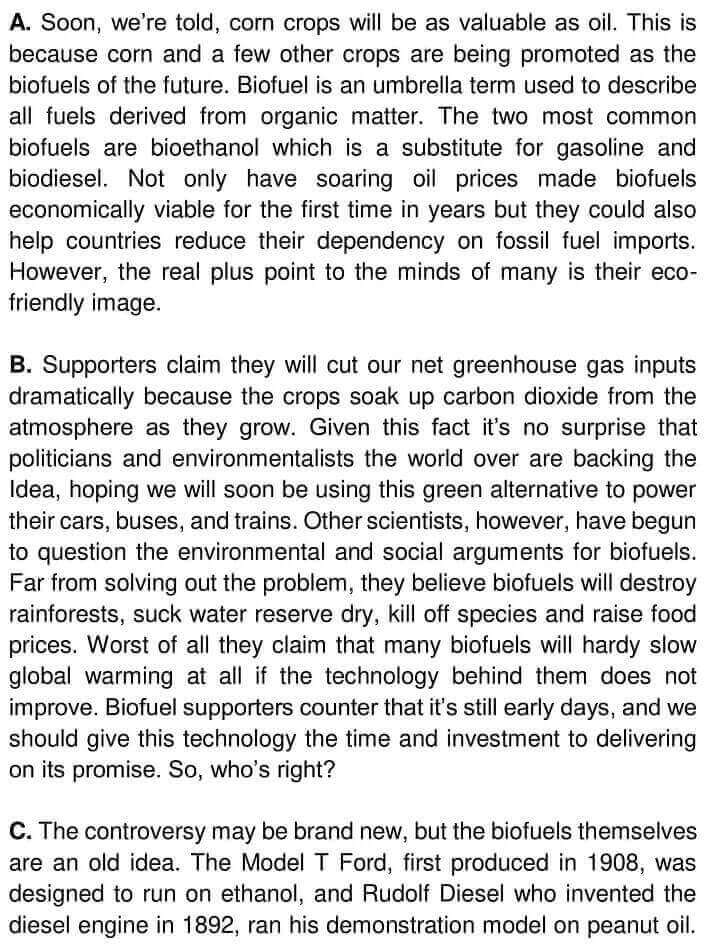
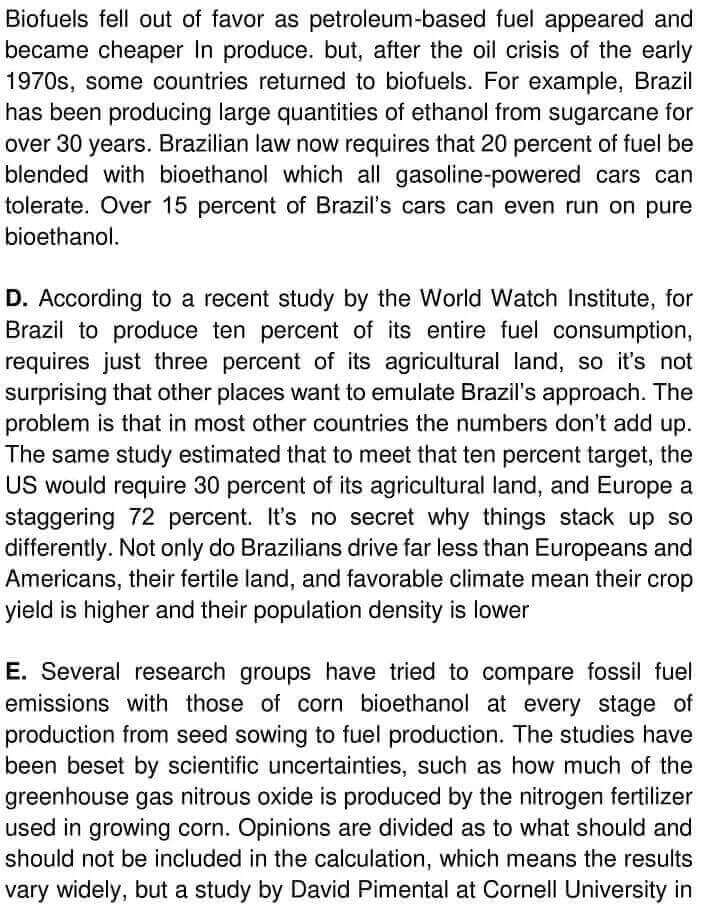
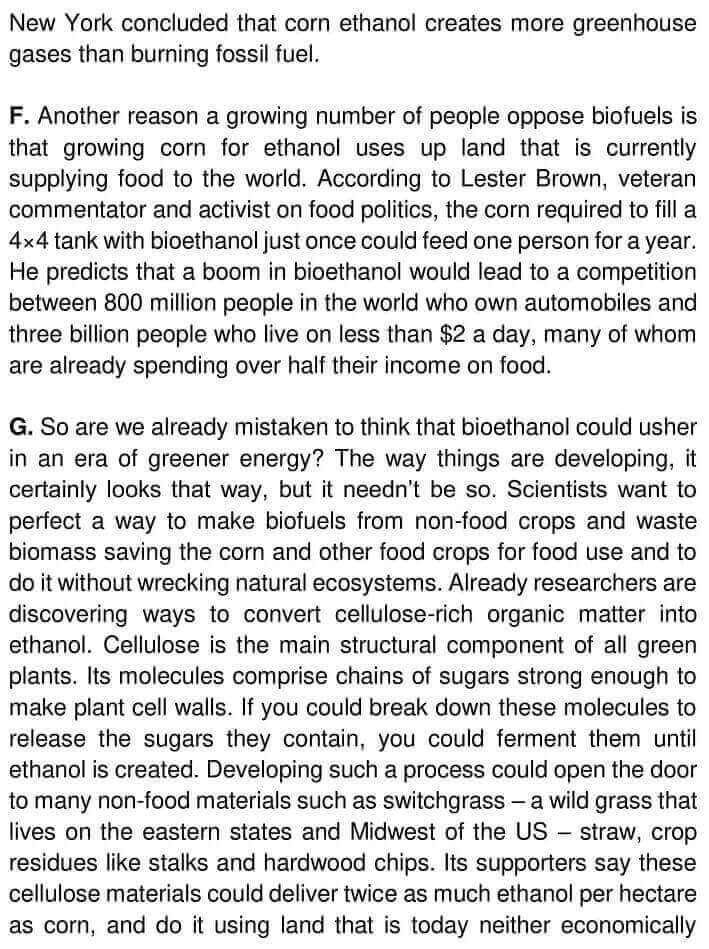
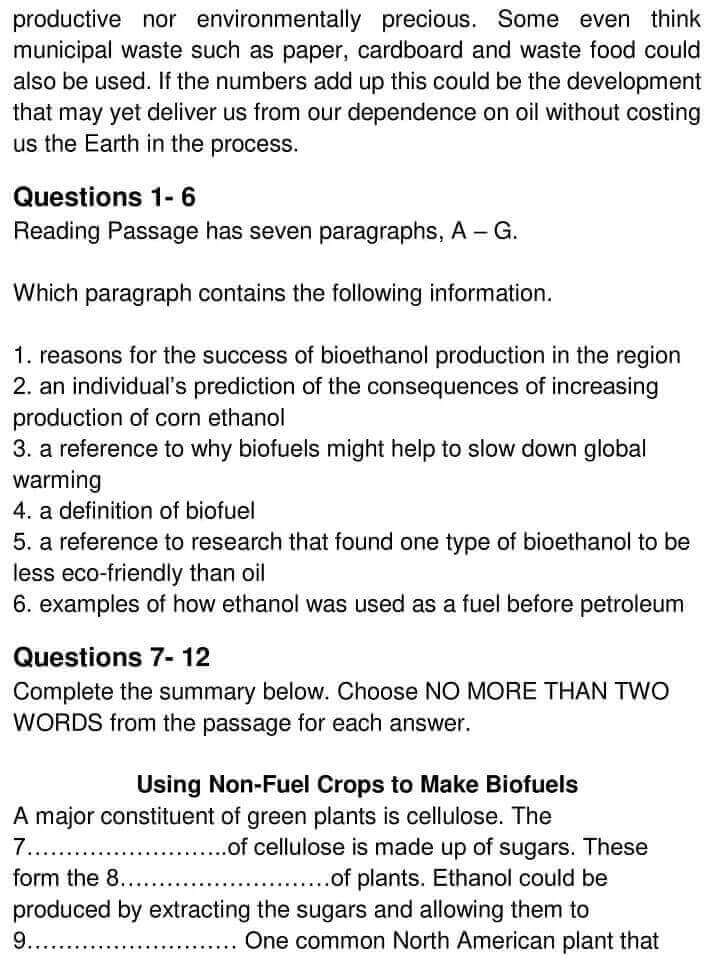
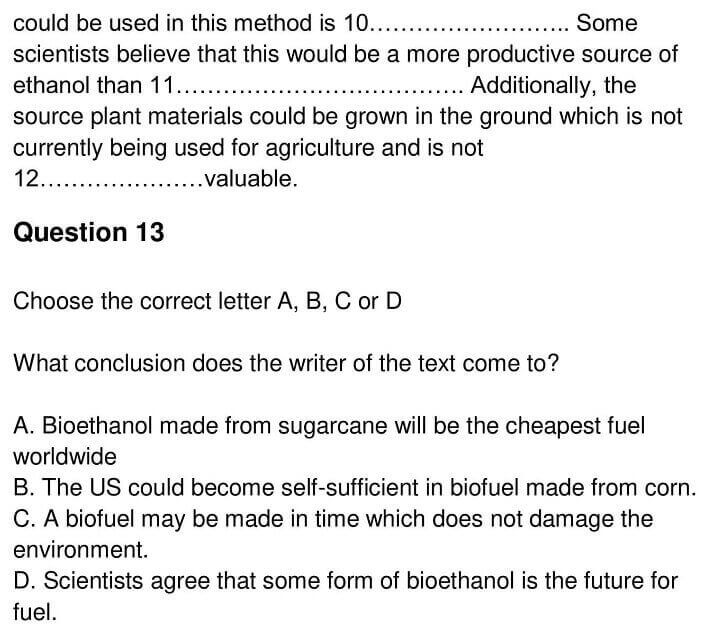
Book a FREE Online Webinar with Our IELTS Experts to Learn More Tips and Techniques for IELTS Reading!
Biofuels Reading Answers
Unlock Answer
Signup/Login and get access to the answers
| Question number | Answer | Keywords | Location of keywords |
|---|---|---|---|
| 1 | D | Not only do Brazilians drive far less than Europeans and Americans, their fertile land, and favorable climate mean their crop yield is higher | Paragraph D;
Last line |
| 2 | F | He predicts that a boom in bioethanol would lead to a competition between 800 million people in the world who own automobiles and three billion people who live on less than $2 a day, many of whom are already spending over half their income on food. | Paragraph F;
Last line |
| 3 | B | Supporters claim they will cut our net greenhouse gas inputs dramatically because the crops soak up carbon dioxide from the atmosphere as they grow. | Paragraph B;
Line 1 |
| 4 | A | Biofuel is an umbrella term used to describe all fuels derived from organic matter. | Paragraph A;
Line 3 |
| 5 | E | a study by David Pimentel at Cornell University in New York concluded that corn ethanol creates more greenhouse gases than burning fossil fuel. | Paragraph E;
Lat line |
| 6 | C | The controversy may be brand new, but the biofuels themselves are an old idea. The Model T Ford, first produced in 1908, was designed to run on ethanol, and Rudolf Diesel who invented the diesel engine in 1892, ran his demonstration model on peanut oil. | Paragraph C;
Lines 1 – 2 |
| 7 | molecules | Its molecules comprise chains of sugars | Paragraph G;
Line 6 |
| 8 | Cell walls/structural component | Its molecules comprise chains of sugars strong enough to make plant cell walls. | Paragraph G;
Line 6 |
| 9 | ferment | If you could break down these molecules to release the sugars they contain, you could ferment them until ethanol is created | Paragraph G;
Line 7 |
| 10 | switchgrass | Developing such a process could open the door to many non-food materials such as switchgrass – a wild grass that lives on the eastern states and Midwest of the US – straw, crop residues like stalks and hardwood chips. | Paragraph G;
Line 8 |
| 11 | corn | Its supporters say these cellulose materials could deliver twice as much ethanol per hectare as corn, | Paragraph G;
Line 9 |
| 12 | environmentally | do it using land that is today neither economically productive nor environmentally precious. | Paragraph G;
Line 9 |
| 13 | C | If the numbers add up this could be the development that may yet deliver us from our dependence on oil without costing us the Earth in the process. | Paragraph G;
Last line |
Seeking IELTS Reading Advice? Sign up with IELTS Experts to Boost Your IELTS Reading Skills!
Check More IELTS Reading Answers
| Daydreaming Reading Answers | Language Diversity Reading Answers |
| Ocean Acidification Reading Answers | The Fruit Book Reading Answers |
| The Future Of Fish Reading Answers | How Lock Picking Works Answers |
Also check :
Practice IELTS Reading based on question types

Start Preparing for IELTS: Get Your 10-Day Study Plan Today!
Recent Articles

Nehasri Ravishenbagam

Haniya Yashfeen

Haniya Yashfeen

Haniya Yashfeen
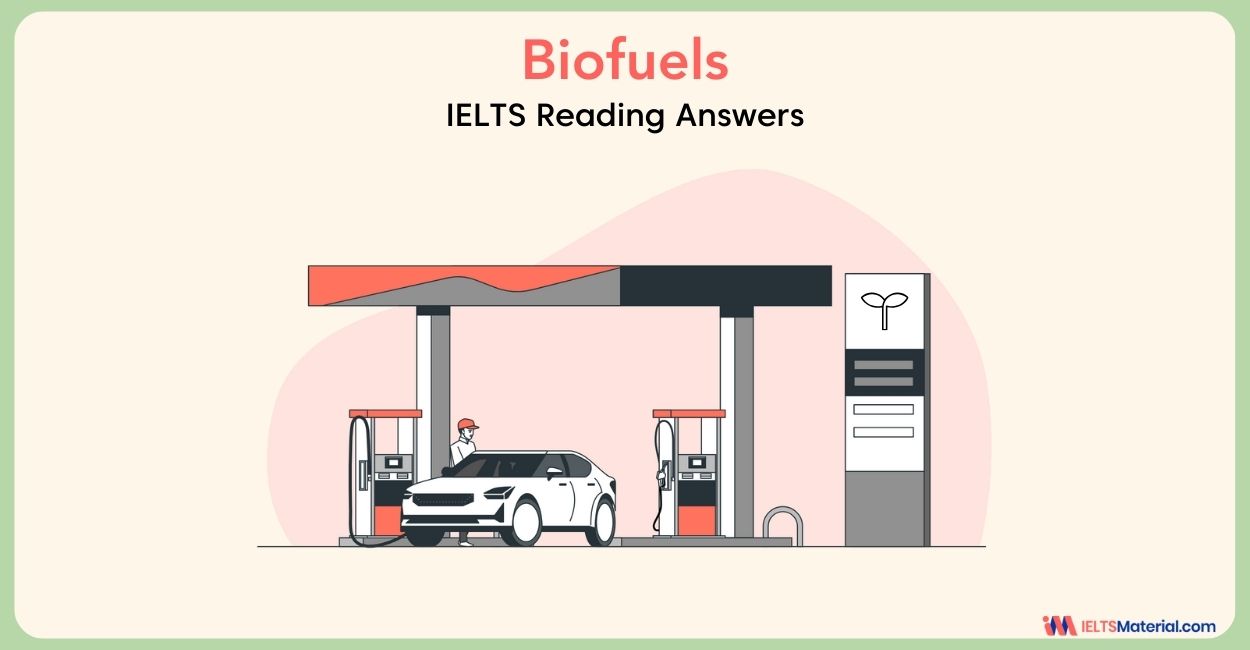



Post your Comments